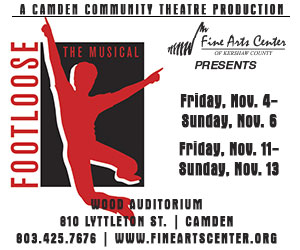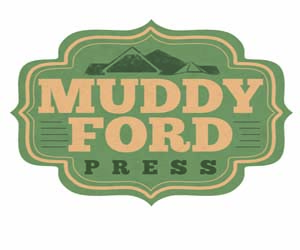Thomas Crouch is un Artista di Molti Mondi
By Cynthia Boiter
Huddled in a dark pub on an approaching autumn day, Thomas Crouch could just as easily be prowling the cobbled streets of Italy like so many of his artistic influences. With an outer persona that conveys dissent, Crouch has the inner animus of a philosopher. Part Jeremy Bentham, part Jacques Derrida, Crouch wears well the mask of the misunderstood – until he finds comfort in the discourse at hand. And even though he still proceeds with due caution, he happily holds forth like a dissident out of jail.
One of the great minds of our city, Thomas Crouch speaks not only with his voice but with his palette. A classically trained painter, Crouch can identify the defining moment that changed the course of his life forever. With 1989 and his senior year at Lexington High School looming, a school guidance counselor offered Crouch the opportunity to study art in Florence. Already a fine visual artist and musician, but something of an ‘80s rebel with a penchant for skateboarding “before it was cool,” he says, “all I had to do was to finish high school there and then I could stay for another three-and-a-half years on scholarship.” He jumped at the chance. “People didn’t understand leather and punk rock and studs around here back then,” he says. “I packed my bags, and I was gone.”
So during the time in a young man’s life when many might sit through uninspiring college lectures or blindly follow a predetermined path, Crouch commuted daily from the Italian countryside into Firenza and the Lorenzo de Medici School of Art. His spare time was spent traveling throughout the continent and hanging out in the Uffizi Gallery, where he logged unknown hours studying the works of Botticelli, Michelangelo, and Caravaggio. He learned feminist theory in a setting that was free from right wing talk radio references of “feminazis” and postmodernism in an environment that, due to if nothing else than to his ex-pat status, allowed him almost complete subjectivity. “The most amazing thing was being exposed to the works of the master painters, sculptors, and architects in the museums and around every street corner,” Crouch says, “and realizing that what I was seeing was where western civilization and thinking began.”
When Crouch returned to South Carolina, he did so not only on a new intellectual level but also with an Old World-inspired palette. “I came back to the states in 1993 and didn’t want to be in Columbia, so I decided to go to Winthrop University. But they didn’t teach oil there, and I had been painting and learning in oil in Italy.”
Crouch changed from using oil paints to acrylics and noticed a distinctive change in the intensity of his colors. “It was really noticeable; the colors are so different, so saturated,” he says, “I didn’t like the brightness of acrylics and, in reality, I should have looked into the school better. I was coming from figurative painting and going into an abstract, acrylics-heavy situation. They didn’t understand where I was coming from up there. In Italy, I had spent a lot of time studying theory and art history and had learned about a lot of postmodernists and fine arts and how to apply that to abstract expressionism. But there was nobody up there to further that discussion,” he says. “So, I failed out.”
Crouch tried two semesters in Columbia at the University of South Carolina but couldn’t find anyone to work with in oils here either. Realizing he was experiencing something of a culture shock, he left the University and Columbia altogether and headed for New York City. “My sister lives in New York and works as an assistant fashion designer there, so I would go up there every now and then, do some building maintenance work to make money, and then come home. One day in 1994 or ’95, I went up there and just didn’t come back.”
Crouch stayed in New York for about a year, he says, doing a little drawing, not much painting, but making some cash and visiting the myriad art museums the city offers. “I basically just got back into living in the U.S.,” he says. “I did some traveling and then eventually said, ‘screw it,’ and came back to Columbia and petitioned USC to get back into school. After that, I did great – Dean’s List and everything.”
It was about this time that Crouch began working with local artist Phillip Mullen, whose large color blocks he admires, and it was from Mullen that Crouch feels he learned some of his most important technique. “He taught me to be succinct and direct about what I was doing,” Crouch says. “I’m sloppy, but he’s not. I learned about the importance of using tape and crispness from him, and that has allowed me to get a kind of organic contrast to my paintings – darkness and light, drips, and a crisp straight line – that I might not have found otherwise.”
When tracing the evolution of his art, Crouch says he has abandoned the political slants of his youth, though his values haven’t changed, and he still enjoys figurative work. He sees in postmodernism a similarity to digital images and has explored the concept of painting as clip art, primarily because it “would show the transparency of the political process by picking up the falseness of political rhetoric, which,” he says, “is a very American way of doing things.”
For a while, Crouch explored large-format painting, but, as is often the case, he ran out of room in his home studio, so he started doing smaller pieces and often concentrating on animals. “As a human, I look up to animals for their constancy,” he says. “I admire animals not knowing about human desire and greed.” Fascinated by animals’ places within human society and the prospect of figuratively putting animals in human spaces, Crouch has recently explored painting animals – birds, especially crows, wolves, baboons – on abandoned blueprints for the Strom Thurmond Wellness and Fitness Center on the campus of USC that he happened upon years ago. The resulting images are evocative and compelling. “Space is such a human creation,” he says. “Animals don’t even think of it!”
Of the great artists who have gone before him, Crouch singles out the late16th – early 17th century Italian painter Michelangelo Merisi da Caravaggio as a major influence, citing Caravaggio’s use of dramatic lighting to realistically portray both the emotion and physicality of the human state. Like Caravaggio, Crouch will blatantly use the mechanism of an X when painting, a technique most often used in concert with a marked form of chiaroscuro, a tonal contrasting of light and dark, sometimes referred to as Tenebrism. Crouch references Caravaggio’s Conversion on the Way to Damascus – in which Saint Paul is said to fall from his horse as the voice of God questions him – as a personal favorite. “If it was any other pre-Renaissance painting, it would have been very grandiose,” he says. “But the thing with Caravaggio was that he painted it like the horse saw it, contrasting the light with another movement to make that characteristic X.”
Contrasts appear frequently in Crouch’s work, whether he is distinguishing light from dark or utilizing an unusual color scheme, oranges and blues, for example. “For the most part,” he says, “I like to use a very small color palette – yellow, ochre, umber, maybe blue and crimson. It’s what I learned in Italy and it stayed with me.”
Crouch is also taken by Caravaggio’s unguarded depictions of the story, as well as by tales of the painter’s personality. “Caravaggio was a hell-raiser,” Crouch grins and nods approvingly. “It’s ironic because all his commissions were for the church and rich people, but he was a wild dude – and he was gay. In fact, he often used his boyfriend as his model. He once killed a guy in a sword fight and had to leave Rome,” because the Pope issued a warrant for his arrest and execution.
Despite his admiration for Caravaggio’s art and flamboyant lifestyle – an attraction that appears to be based on aesthetics and an appreciation of authenticity – Crouch’s way of life is decidedly less dramatic. The never-married 39-year-old owns his own home and, when he isn’t painting, he is typically making music – his most recent band is the Mercy Shot, though he has a rock band résumé that goes back to when he was 15 years old – or cooking meals at Hunter Gatherer Brewery and Alehouse, where he has worked for almost 10 years. “I don’t think of myself as a foodie, and I have no formal training in food – I learned from the people I worked with,” he says. But the artist does recognize a similarity between painting and preparing food. “There’s a similar lexicon applied to each,” he says, and then turns the conversation toward a discursive examination of the Spice Trail and its influences on Jamaican and Indian cuisines.
That’s because, more than anything, Crouch is an intellectual spirit in the body of a man too young to be a hippie and too old to be a hipster – not that he would easily comply with either label – but he is certainly not of the time period in which the rest of us live today. While some might peg him as a Renaissance man – and though in many ways he looks and behaves the part – Crouch is without affectation and would likely reject that title as well. The artist simply seems to approach life from the perspective of a scholar contemplating a riddle with the complete confidence that he eventually will solve it. He doesn’t take for granted the fact that everything is a clue. “Traveling through Europe and to Moscow enabled me to realize how big and diverse the world is and that people of different cultures, for the most part, share the same common humanitarian values and interests and are just curious to learn,” he says.
Though in so many ways already accomplished, Crouch is intelligent enough to know that there is always more to be learned and assimilated into one’s life, and one’s art. As his body of work grows, the benefactors of his continued education are the patrons who follow his progress and document his evolution on the walls of their own galleries.






.jpg)
